Essential Guide to Cleaning Your Dryer Vent Pipe
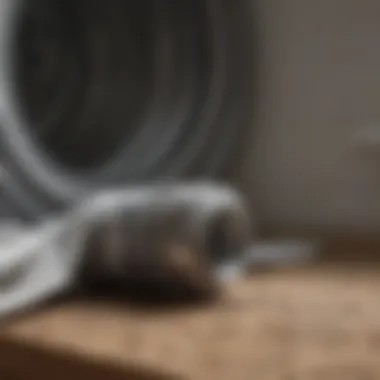
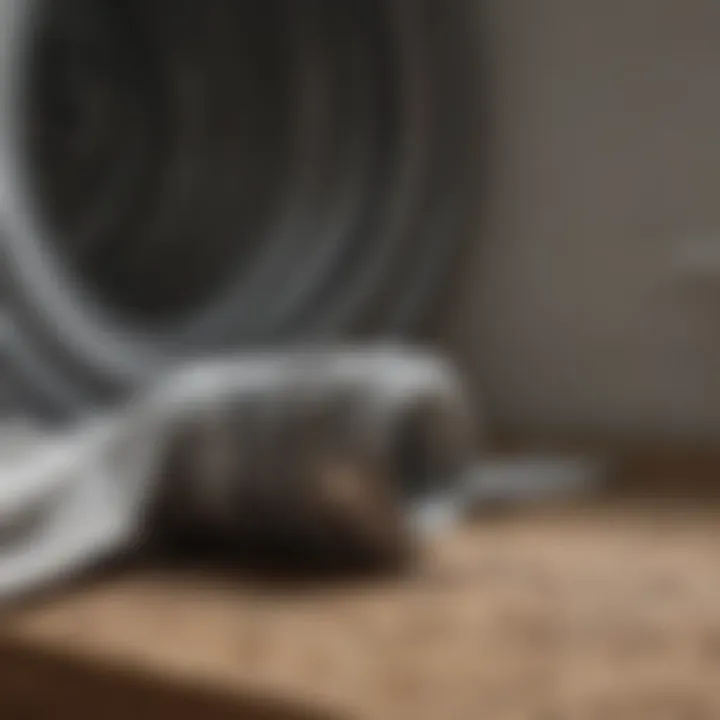
Intro
Cleaning a dryer vent pipe is an often overlooked yet essential maintenance task for homeowners. Accumulated lint and debris can lead to reduced efficiency in dryer operation and, more importantly, pose a significant fire hazard. This section provides a comprehensive understanding of the cleaning process, highlighting both safety measures and the correct techniques to employ.
A thorough cleaning of the dryer vent pipe can not only enhance the performance of your appliance but also contribute to lower energy consumption. Maintaining the vent should not be seen as a chore, but rather as an important step in ensuring the longevity of the dryer and the safety of your home. Proper understanding of the cleaning process can prevent future complications. Let’s delve into the specific procedures, tools, and the significance of regular maintenance.
Understanding Dryer Vent Systems
Understanding dryer vent systems is an essential first step in maintaining the efficiency and safety of your appliance. Dryer vents play a crucial role in how your dryer operates. They are responsible for carrying out heat, moisture, and lint, which are the byproducts of the drying process. Proper knowledge of these systems can prevent issues that may arise from neglect or misunderstanding.
Components of a Dryer Vent
Dryer Unit
The dryer unit is a key component in the overall dryer vent system. This appliance generates heat using electric or gas power. Its primary function is to dry clothes by circulating hot air. A critical feature of the dryer unit is its built-in lint trap, which captures a significant amount of lint during the drying process.
The lint trap's effectiveness is vital because when lint accumulates, it can obstruct airflow, leading to reduced efficiency. A popular choice for many users, modern dryers often include sensors to detect moisture levels. This helps optimize drying time and energy usage, making them an efficient option. However, various dryer units may differ in design, which can affect how easily they connect to ductwork.
Ductwork
Ductwork connects the dryer unit to the vent cap outside your home. The duct's purpose is to transfer hot, moist air away from the dryer. Common materials used for ductwork include flexible plastic and metal. Metal ducting is often recommended due to its durability and fire-resistant properties.
The critical characteristic of ductwork is its diameter. A duct that is too small can restrict airflow, leading to overheating and potential fire hazards. Regular inspection of ductwork ensures that there are no bends or kinks that can trap lint. Using proper duct lengths and angles can significantly enhance airflow and efficiency.
Vent Cap
The vent cap is the final component in the dryer vent system. Installed outside, it allows hot air to exit while preventing pests and debris from entering. A well-designed vent cap will have a flapper that opens during operation but closes when the dryer is off.
The primary benefit of a vent cap is maintaining efficient airflow. However, if it becomes clogged with lint or obstructed by exterior debris, it can restrict airflow, causing poor dryer performance. Ensuring the vent cap is clean and functional is critical for overall dryer health.
How Dryer Vents Work
The functionality of dryer vents relies on several mechanisms that ensure efficient operation. Understanding these aspects is key to recognizing the importance of regular cleaning and maintenance.
Airflow Mechanism
Airflow is central to the operation of dryer vents. The dryer unit uses a fan to draw air from the room, heats it, and circulates it through the clothing. Once the air passes through the clothes, it carries away moisture and lint.
A vital characteristic of the airflow mechanism is consistency. If airflow is interrupted, it can lead to longer drying times and increased energy costs. Maintaining unobstructed vent pathways can significantly improve dryer efficiency.
Moisture Management
Moisture management is another critical factor in dryer vent systems. The ability to expel humidity is essential. Too much moisture can create an environment conducive to mold growth and unpleasant odors.
A key characteristic of this function is the vent's positioning. An optimal location allows for direct expulsion of moist air. This helps in managing humidity levels effectively within the dryer space. However, if moisture builds up, it can lead to additional health and safety concerns.
Heat Extraction
Heat extraction works in tandem with both airflow and moisture management. Effective removal of hot air is essential for the drying process. Each dryer unit is designed to generate heat, but if the heat is not adequately expelled through the vent, it could damage the appliance or lead to overheating.
A typical feature of heat extraction systems in modern dryers includes thermostats that monitor temperatures. However, if vents are blocked or restricted, it limits their effectiveness, and users may face increased energy costs and higher risks of fire hazards.
Proper understanding and maintenance of a dryer vent system can significantly enhance its performance, safety, and longevity.


Risks of Neglecting Dryer Vent Maintenance
Maintaining a clean dryer vent is critical for both safety and efficiency. When dryer vents are neglected, several risks manifest, leading to severe consequences. This section elaborates on these risks, underscoring the importance of regular maintenance for any homeowner.
Fire Hazards
Understanding Lint Build-Up
Lint build-up in dryer vents is a significant contributor to fire hazards. Lint is highly flammable and can accumulate if not properly managed. The amount of lint produced is affected by the type of fabric and frequency of use. Reducing this build-up is essential to maintain safety. Lint collects in hard-to-reach areas and can block airflow, creating a scenario where the dryer overheats. The unique feature here is the rapid ignition of lint, which occurs at relatively low temperatures.
Statistics on Dryer Fires
According to research, dryer fires account for a large percentage of residential fires. The National Fire Protection Association reports that over 15,000 fires each year are linked to clothes dryers. Recognizing this statistic highlights the reality that many homeowners overlook: dryer lint can ignite, leading to disastrous consequences. The distinctive aspect of this statistic is its alarming frequency. Regular maintenance can drastically reduce these risks.
Reduced Efficiency
Increased Energy Bills
A clogged dryer vent directly impacts energy efficiency. When airflow is restricted, the dryer has to work harder to dry clothes, resulting in increased energy usage. Higher electricity consumption reflects on the energy bills monthly, causing frustration for homeowners. A significant advantage of cleaning dryer vents is the potential to lower these expenses. This cost-saving measure enhances the overall efficiency of the appliance and ensures normal functioning.
Longer Drying Cycles
Longer drying cycles result from reduced airflow due to lint accumulation. As the dryer struggles to operate normally, clothes may require multiple cycles to dry properly. This inefficiency leads not only to wasting time but also contributes to increased wear and tear on the appliance. The distinct feature here is that what can be a simple cleaning task can save hours of drying time.
Potential Appliance Damage
Overworking the Dryer
As the dryer works harder due to clogged vents, it risks internal damage. Overworking can result in overheating of the motor and other crucial components, leading to premature failure. This cycle of strain increases the risk of appliance breakdown. The compelling reason to perform regular maintenance emerges from this knowledge: prevent advancing problems before they escalate.
Cost of Repairs
Repairing a malfunctioning dryer can lead to unexpected expenses. Costs can vary significantly, depending on the issue and model of the appliance. Investing time in maintenance can mitigate these costly repairs. This contrasts starkly with the simplicity of preventive care. The economic advantage of routine cleaning becomes increasingly clear in this context.
Overall, neglecting dryer vent maintenance carries significant risks that are easily preventable. Regular checks and cleanings ensure not only the safety of the household but also enhance the efficiency and lifespan of the appliance.
Signs Your Dryer Vent Needs Cleaning
Recognizing when your dryer vent requires cleaning is crucial for ensuring both the safety and efficiency of your appliance. Over time, lint and other debris can accumulate in the vent system, leading to a variety of problems. Early detection of these signs can prevent severe consequences, such as fire hazards or increased energy costs. Understanding what to look for can help you maintain your dryer and promote its longevity.
Visual Cues
Lint Accumulation
Lint accumulation is a primary indicator that your dryer vent needs attention. This build-up occurs as clothes tumble dry, releasing fibers that collect in the vent. A visible layer of lint near the vent exit suggests that airflow is becoming restricted. If left uncleaned, this can seriously impede the dryer’s efficiency. Therefore, regular inspections are necessary.
Key characteristic: The presence of visible lint signifies that your vent is clogged.
Advantages: Identifying lint accumulation early allows for prompt action. This simple observation can save you from complications and ensure that your dryer functions efficiently.
Discoloration of Ducts
Discoloration of the ducts represents another worrying sign. Overheating due to restricted airflow can cause changing colors in the duct material. Grey or dark patches on the duct surface are often clues that your ducts have been compromised by excessive heat, indicating a potential issue with lint build-up.
Key characteristic: Noticing a change in color on the duct surface can be a signal of inefficiencies in your venting system.
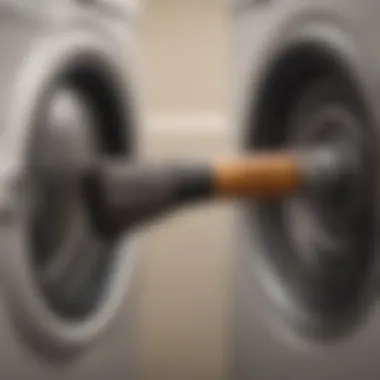
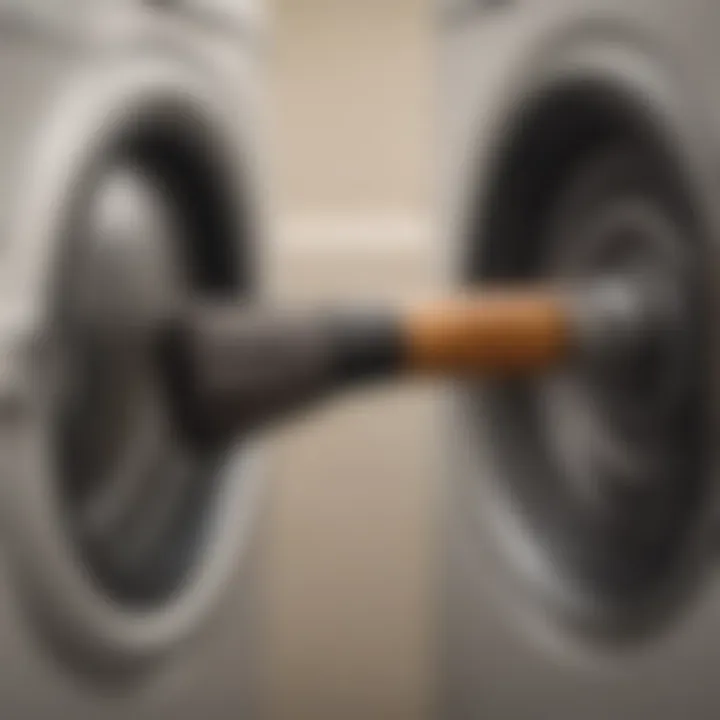
Advantages: Acting on this sign can help maintain the integrity of your venting system. Addressing discoloration early prevents further deterioration which may result in more expensive repairs down the road.
Operational Indicators
Unusually Hot Exterior
An unusually hot exterior of the dryer is another clear indication of trouble. If the surface of the dryer feels warm to the touch, it suggests that airflow is being obstructed, leading to a build-up of heat. This inefficiency not only hampers performance but also poses significant safety risks, including fire hazards.
Key characteristic: Touching the exterior of the dryer and experiencing warmth can be alarming.
Advantages: By recognizing this sign, you can take necessary precautions to reduce risk and restore optimum functioning to the appliance.
Longer Drying Times
Finally, longer drying times are a classic symptom that something is off. If your clothes take twice as long to dry as they once did, this may indicate that the vent pipe is blocked. Such delays suggest that the dryer struggles to push air through the system effectively.
Key characteristic: Extended drying cycles are often indicative of lint and debris blockage.
Advantages: Recognizing and addressing this issue not only improves the performance of your dryer but also lowers your energy bills by allowing it to operate efficiently.
Keeping an eye on all these indicators enhances appliance performance and significantly reduces the risk of fire hazards and energy consumption.
Preparation for Cleaning the Dryer Vent Pipe
Preparing for dryer vent cleaning is vital for ensuring an effective and safe experience. A thorough preparation can save you time and enhance the efficiency of the cleaning process. This section focuses on the necessary tools and safety precautions needed before embarking on this task. By understanding these elements, individuals can make the process smoother and more efficient.
Gathering Necessary Tools
To clean a dryer vent pipe effectively, certain tools are essential. These tools not only facilitate a proper cleaning process but also ensure that the task can be performed safely.
Vacuum Cleaner with Hose
A vacuum cleaner with a hose attachment is a primary tool for dryer vent cleaning. Its key characteristic is suction power, allowing for the removal of lint and debris accumulated in the ductwork. This tool is highly beneficial because it can reach deep into the duct and pull out stubborn lint that simple brushes might miss.
The unique feature of the vacuum cleaner is its versatility. Many models come with various attachments that can help clean different surfaces. This aspect allows it to serve multiple purposes beyond just dryer vent maintenance. However, a possible disadvantage could be that not all vacuum cleaners are designed for high-efficiency particulate air (HEPA) filtration, which can impact how much lint is actually captured during the cleaning.
Lint Brush
The lint brush is another crucial tool for cleaning the dryer vent. Its primary role is to manually dislodge lint that has settled in hard-to-reach areas of the vent pipes. One key characteristic is its long, flexible handle, which allows it to navigate bends in ducting easily. It is widely regarded as a beneficial tool because it can access areas where larger equipment may struggle.
The unique feature of this lint brush lies in its bristle design. It can effectively capture lint without causing damage to the vent pipes. Nonetheless, it may be noted that the lint brush requires manual effort and may not be as efficient on its own compared to other tools like a vacuum.
Screwdriver
Lastly, a screwdriver is essential for some dryer vent cleaning scenarios. This tool is important for removing screws that might secure the dryer vent in place. One of its key characteristics is its simplicity and ease of use.
The screwdriver is a beneficial choice because it allows for quick access to various components of the dryer vent system. A unique feature of modern screwdrivers is their magnetic heads, which can hold screws in place, reducing the risk of losing them during the cleaning process. However, it is crucial to select the correct type and size to avoid damaging the screws or the vent itself.
Safety Precautions
Ensuring safety during dryer vent cleaning is non-negotiable. Observing certain precautions helps reduce risks associated with this task, making it a safer activity.
Disconnecting the Dryer
One important safety precaution is disconnecting the dryer before starting the cleaning process. This step prevents accidental power activation while work is being done. Its key characteristic is the assurance it provides against electrical hazards and potential injuries. Disconnecting the dryer is a critical step to ensure the safety of the person cleaning the dryer vent.
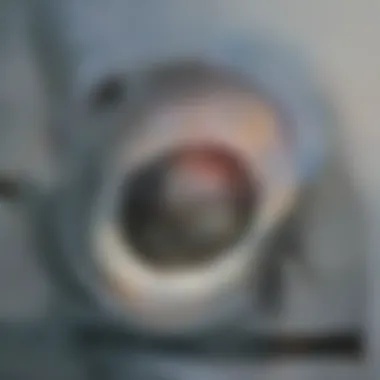
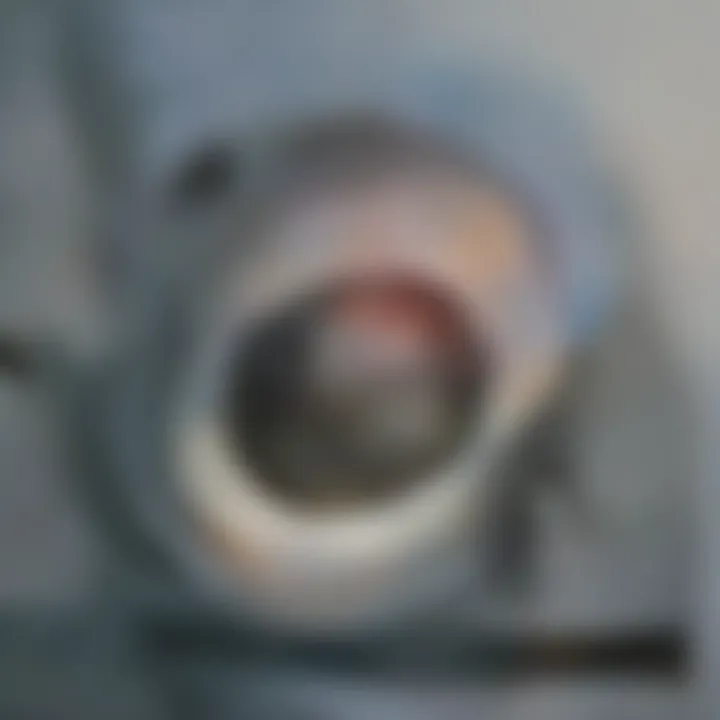
This unique feature of disconnecting is that it protects both the technician and the appliance from damage. However, it may be somewhat inconvenient, as it can involve moving the dryer away from the wall to access the connection point.
Wearing Protective Gear
Wearing protective gear is equally crucial when cleaning the dryer vent. Items such as gloves and safety goggles offer a barrier against lint and dust irritation. The key characteristic here is that it limits exposure to potentially harmful debris. This precaution is a common sense choice that enhances safety during the cleaning process.
A unique feature of using protective gear is that it minimizes skin and eye irritation, particularly for those who might have allergies. While wearing such gear does not hinder performance significantly, some might find it uncomfortable or cumbersome.
The combination of the right tools and safety precautions is essential for a successful cleaning of the dryer vent pipe.
Step-by-Step Guide to Cleaning the Dryer Vent Pipe
Cleaning a dryer vent pipe is essential for maintaining safety and efficiency in any home. Neglecting this task can lead to fatal fire risks and increased energy costs. A systematic approach helps not only in achieving cleanliness but also in sustaining appliance performance. This guide offers a comprehensive procedure for effectively cleaning your dryer vent pipe.
Disconnecting the Dryer
Removing the Vent Hose
Removing the vent hose is the first step. This part is crucial because it disconnects the dryer from the vent system. The vital aspect is how tightly the hose connects to the wall duct and dryer. A snug fit can prevent leaks but can make removal difficult. Carefully pulling it off conserves its integrity while ensuring it is clean. A proper disconnection helps in avoiding any damage.
Shutting Off Power Supply
Before any cleaning, shutting off the power supply is a critical operation. It ensures safety during the cleaning process, particularly when working around electrical components. The main characteristic here is that turning off the circuit protects against accidental operation of the dryer while using cleaning tools. Turning off the power supply is a sound and popular choice to mitigate hazards associated with electricity when repairing or cleaning appliances.
Cleaning the Inside of the Dryer
Removing Lint Trap
Removing the lint trap is significant in the cleaning process. This action helps address lint buildup, a primary cause of fire hazards. The importance lies in thoroughly taking out the filter to access the areas where lint may accumulate beyond the trap. The lint trap is usually accessible and easy to handle, making it a beneficial step in an overall cleaning strategy. However, some lint may linger, necessitating more thorough cleaning approaches.
Using the Lint Brush
Using a lint brush effectively dislodges lint in the dryer interior. It allows for meticulous cleaning in hard-to-reach spaces. The unique feature of a lint brush is its ability to get into crevices where traditional cleaning won't suffice. Regular use of a lint brush ensures less lint returns during cycles and aids in maintaining a healthier appliance environment.
Cleaning the Vent Ducts
Using a Vacuum Extension
Utilizing a vacuum extension is vital for reaching the vent ducts efficiently. This tool enables access to long and narrow ductwork that can be challenging to clean. The key characteristic of using a vacuum extension is its ability to suck out debris without the need for invasive cleaning methods. This makes it a popular choice among homeowners. However, it is essential to ensure that the vacuum has enough power to clear out stubborn lint by using sturdy attachments.
Employing a Dryer Vent Cleaning Kit
Employing a dryer vent cleaning kit facilitates a more thorough cleaning process. These kits typically include specialized brushes and other tools designed specifically for dryer vent systems. The unique aspect is that these kits often release lint that may be stuck in more intricate parts of the ductwork. The drawback could be the investment; buying a kit may seem unnecessary for infrequent users. But the benefits of better airflow and safety outweigh the costs over time.
Cleaning the Exterior Vent Cap
Removing Debris
Removing debris from the exterior vent cap is critical for ensuring proper airflow. This action prevents blockages that can revert back into the duct system. The key feature is that debris often contains not just lint but also leaves or small animals that can obstruct the flow. Routine cleaning of the vent cap is essential for optimum drying efficiency and appliance performance.
Ensuring Unobstructed Airflow
Ensuring unobstructed airflow is the final consideration after cleaning. Proper airflow is not just about being clear of blockages; it means that air can freely pass from the dryer to the outside. This characteristic makes airflow a major element for efficient drying processes. Neglecting airflow considerations can lead to back pressure, which can damage the dryer over time. Therefore, periodically checking airflow after cleaning is an important aspect of maintaining dryer vent efficiency.
Post-Cleaning Maintenance Tips
After completing the cleaning of your dryer vent pipe, understanding the importance of post-cleaning maintenance can greatly benefit both the efficiency of your dryer and overall household safety. Maintaining your dryer vent system post-cleaning helps ensure that it functions optimally and can prevent the hazardous buildup of lint that leads to fire risks and energy inefficiency. Furthermore, regular care can prolong the life of your dryer, saving you money in the long run. It is essential to develop an awareness of the maintenance strategies that will keep your dryer vent system in good shape.
Regular Inspection Frequency
Recommended Cleaning Schedule
Implementing a recommended cleaning schedule is crucial for ongoing maintenance after you have cleaned your dryer vent pipe. Typically, it is advised to inspect and clean your dryer vent at least once a year. This regular maintenance helps in identifying any problems that may develop over time. By incorporating this schedule, you reduce the likelihood of lint buildup and improve the efficiency of your dryer. A unique feature of this cleaning schedule is that it allows for adaptability based on usage; homes that frequently use their dryers may need more frequent inspections. Overall, this regularity is a beneficial choice, especially in homes with multiple occupants who regularly do laundry.
Signs to Look For
While having a cleaning schedule is key, knowing the signs to look for can further enhance maintenance. Some visible signs suggest it is time to clean your dryer vent. Indicators such as an unusually hot exterior of the dryer, longer drying times, or visible lint accumulation around the vent area should not be ignored. These aspects are useful because they provide early warnings of potential problems and allow you to take action before a serious situation arises. Being attuned to these signs ensures better performance of the dryer and helps maintain safety.
Upgrading Venting Systems
Choosing the Right Materials
When considering choosing the right materials for your dryer vent, it is important to know that the material can significantly affect the efficiency of the venting system. High-quality materials, such as rigid metal ducting, are beneficial choices because they resist lint buildup better than flexible plastic or vinyl options. They allow for smoother airflow and unimpeded escape of moisture. Selecting the right material not only improves ventilation efficiency but also reduces fire hazards. However, some materials may need professional installation, which could entail potential extra costs.
Avoiding Long Duct Runs
Another critical factor is avoiding long duct runs. Longer ducts can lead to increased lint accumulation and decreased airflow, meaning your dryer has to work harder, resulting in energy inefficiency. Therefore, keeping the duct runs as short as possible is highly advantageous. A shorter run can lead to better airflow and easier cleaning, making it an excellent choice for maintenance. Conversely, longer ducts can complicate cleaning efforts and reduce overall dryer performance. Avoidance of long duct runs should therefore be incorporated into any planning regarding dryer vent systems.







